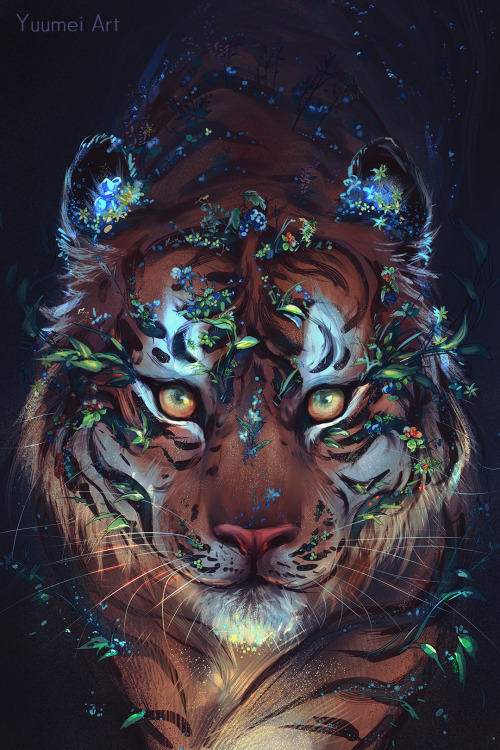Secrecy In Anthropology
Secrecy in anthropology
NO. 1
Anthropology is the scientific study of human beings, and social anthropology is the study of behavior in certain societies. Studying patterns of behavior means studying how humans think, react, and evolve in society, but that also means understanding human secrecy through ethnographic research. But what is secrecy? In the ethnographic record, initiatory secrets often stand for the quiddity of culture, and the revelation of concealed realities is an organizing trope in much ethnographic writing.

NO. 2
‘’Intellectual historiography shows that the concept of secrecy has carried overwhelmingly negative, antisocial, and primitive connotations in learned Western discourses since the Enlightenment and that early anthropological research often supported such an implicitly social evolutionist stance. Secrecy and risk are closely connected. Secrecy engenders risk insofar as concealment entails the possibility of unwelcome revelation; non-circulation also creates a risk of its own, such as the breakdown of social relations or cultural reproduction. However, risk can also, gender secrecy as a strategy to manage perilous social relations. In practice, the casual relationship between secrecy and risk can be difficult to disentangle because the subjective experience of risk and the urgency of secrecy are constitutive--in both ritual secrecy and strategic secrets of state.’’

NO. 3
Secrecy excludes outsiders, but the power it attracts lies in the possibility it may be disclosed and revealed to those same outsiders. ‘’This contradictory centrifugal and centripetal forces push and pull on secrets. Possessing secrets can make people intensely aware of the fragility of knowledge and the precariousness of their custodial position. Revelatory and initiatory practices within secretive practice activities are often carefully calibrated to induce a sense of risk. It is paradoxical also because it ‘must be performed in a public fashion in order to be understood to exist.’ The revelation of concealment is a way of socially mobilizing the secret as a form of sociocultural capital without dispersing restricted knowledge.’’ Basically, secrecy is a personal form of belonging, of being included in the intimate affairs of family, friends, or just knowing about something that you didn’t previously.

More Posts from Arieso226 and Others
Sing-Off Percy Jackson Style!
Okay, I have this thought that there would be a sing off in CHB, of course when Leo comes back with Calypso and stuff, and that after a few weeks, the Apollo cabin comes up with an idea that the heroes of the prophecy should have an ultimate competition called Battle of the Voices! (Because they were bored)
The only problem : They pick who's gonna be the ones to sing off. And the first are Leo vs. Nico. But Leo and Nico get to pick which songs, of course after Nico gets over how ridiculous this is. Based off their own personality, Leo picks Centuries by Fall Out Boy, and dresses up in complete black. With his voice, it sounded like a dead donkey, but he thinks it's good. But then Nico comes in, dressed up in red collar jacket, jeans and sneakers, and black hat that says, Foxy. Almost everyone is in shock when he comes up on stage and starts singing and dancing to Uptown Funk, and he completely kills it with his vocals. Even makes his own killer moves once the song is done. Then he drops the microphone in front of Leo, Jason, Percy and Will, and says, "Nailed it," before walking off the stage to his cabin
Whatever you’re thinking, think bigger. What got you here won’t get you there.










Some thoughts from the block crafted by community scholars and decoloniziners 🇵🇸🌸
"Nobody in the world, nobody in history, has ever gotten their freedom by appealing to the moral sense of people who were oppressing them." ~ Ancestor Assata Shakur
"If you are silent about your pain, they’ll kill you and say you enjoyed it." ~ Ancestor Zora Neale Hurston
“Those who commit the murders write the reports.” ~ Ancestor Ida B. Wells
"They have in me struck down but the trunk of the tree; the roots are many and deep - they will shoot up again!" ~ Toussaint Louverture
“Force, no matter how concealed, begets resistance.” ~ An ancestral Lakota proverb
The Massacre of Wounded Knee
The Massacre of Wounded Knee was one of the most devastating, horrifying acts of cruelty committed by soldiers of the U.S Army. Innocent men, women, and children of the Lakota tribe were shot to death, and over fifty-one were wounded, who soon succumbed to their injuries later. Over 250 people tragically died on December 29, 1890, near Wounded Knee Creek on the Lakota Pine Ridge Indian Reservation in South Dakota. And what exactly was the victim’s crime for death? The sacred dance, ‘Ghost Dance’.

‘‘The Ghost Dance, created by a Pauite Indigenous man from Nevada by the name of Wovoka, is an indigenous religious movement that envisioned the coming of a Native Messiah and a millennium marked by the return of the depleted game, the resurrection of deceased Indigenous relatives, and the supernatural disappearance of Euro-American colonizers. Misconstructing the Ghost Dance as insurrectionary, the U.S Government sent troops to suppress the feared threat to American sovereignty. The 7th Calvary, on December 29, 1890 held Lakota Chief Big Foot and his people in custody at the site; as the troops disarmed the Lakota people of weapons the next day, when an errant shot fired which lead to the resulting chaos.’’

Twenty-five soldiers also died and thirty-nine were also injured, and six of them succumbed and died later on. The army had rushed in additional forces under Colonel James W. Forsyth, who had quickly surrounded the encampment. To the army, disarming the Lakota people was seen as a peaceful measure, designed to eliminate the tribe’s capacity to launch the violent outbreak. To the Lakota and Big Foot’s followers, the plan appeared to leave them vulnerable to violence. ‘‘For all the Lakota’s obvious displeasure at the disarmament order, neither group seemed prepared for a fight that morning. For their part, the Lakota were not only outnumbered, out-armed, and flying a white flag of truce; they risked placing their families in danger if they launched any violent resistance. Because of the disarmament procedure, the two groups were so close together when the fighting began that most combatants had little time to reload. The initial conflict thus rapidly devolved into a bitter hand-to-hand struggle. Once the soldiers closest to the Indian camp had either fallen or retreated, however, the supporting troopers were able to bring their fire to bear on the camp with deadly effect. Particularly devastating were the four Hotchkiss cannons. Few Lakota warriors had ever encountered this weapon, which could fire almost fifty rounds per minute. In less than an hour, Indian resistance to the troops collapsed.’’

On May 28, 1903, five thousand Lakota’s assembled, coming to dedicate a monument to honor the Minneconjou Lakota Chief Big Foot and more than two hundred of his followers. ‘‘The obelisk emerged from the Lakota’s engagement with the politics of memory—the narrative accepted by the government and dominant society—of ‘the Battle of Wounded Knee’, in compensation claims and in their memorial practices. The Lakota’s monument was a rare intervention by indigenous peoples in a western memorial landscape largely controlled by Euro-Americans. As Edward Tabor Linenthal and Micheal A. Elliot have surmised, Americans erected monuments to honor George Armstrong Custer and other white soldiers killed in the Indian/Indigenous wars. Even when whites killed large numbers of Indigenous, Americans found ways to memorialize massacres as necessary acts that brought peace and progress to the nation, as Karl Jacoby and Ari Kelman have demonstrated. Although army officials have disagreed over exactly what happened at Wounded Knee, the War Department ultimately upheld the Seventh Calvary’s claim that ‘treacherous’ and ‘fanatical’ Ghost Dancers had attacked unsuspecting troops, thereby disavowing any responsibility for the deaths of women and children.’’

This article is written in daily remembrance of the deaths of millions of indigenous or diverse people, and the acts of continuous violence that plagues this country because of bigoted and ignorant people, but especially at the hands of people who claim they are here to protect and serve. These acts were and still are commonplace in American society, and to not write about the horrors in their originality would be pointless, and otherwise claim that they never happened at all.
Tyre Nichol’s mother has set up a memorial fund to help pay for mental health services for his family and a memorial skate park in his name. If you cannot donate, please share.


![The Lidérc [Hungarian Folklore]](https://64.media.tumblr.com/8b786c2eb3baf90966bade8bb2c7d913/6c10fb0625988ad8-5f/s500x750/b59248af1a83c1e9afc6f839e61deacc81c41b84.jpg)
The Lidérc [Hungarian folklore]
According to old Hungarian folklore, if you keep the first egg of a pitch-black hen warm under your arm until it hatches, the resulting chick will not be of a chicken but a lidérc. It will shapeshift into a creature closely resembling a human (but usually with one chicken foot) and will have sex with its owner, draining his life energy in the process. However, if the owner is a woman, the lidérc will suck her blood instead, which will cause diseases in the owner. In both cases, however, the creature will make a hoard of golden objects which it gets from an unknown source, making the owner rich. It will also perform labor and tasks that you ask it to do. Should you want to get rid of your lidérc, you have to ask it to perform an impossible task (like ‘tie a knot in a cloud’ or ‘empty all the water in this well using only a sieve’) in which case it will become so frustrated that it dies on the spot.
Another version of the story claims that the lidérc is a very tiny humanoid creature that may sometimes be found in your pocket, or in boxes or bottles. If you do own one of these, it is said your soul is taken by the creature, and you’re given supernatural powers in return.
Finally, some other stories claim the lidérc is an eldritch floating flame, but it is capable of assuming a human form once it touches the ground. Once it does so, its footprints will be those of a horse, despite having human feet. This creature is an omen of doom, as it brings illness and bad luck to those it encounters. Burning incense can keep it at bay and prevent if from entering one’s house. In eastern Hungary, this version of the creature haunts cemeteries at night but disappears without a trace as soon as the cry of a rooster is heard.
Sources: https://occult-world.com/liderc/ https://en.wikipedia.org/wiki/Lid%C3%A9rc (image source: https://occult-world.com/liderc/)
Cool book

Currently reading this charmingly illustrated debut novel by Will Ottley. Mountain Garden is an inspiring fable crafted with care and the beauty of nature in mind. So far it’s a refreshing read featuring the themes of love, bravery, and intuition.

Happy Chinese New Year! The year of the tiger~
A characterization of Mary Shelley's ''Frankenstein''


26-year-old Anthro-Influencer Anthropology, blogger, traveler, mythological buff! Check out my ebook on Mythology today👉🏾 https://www.ariellecanate.com/
208 posts
